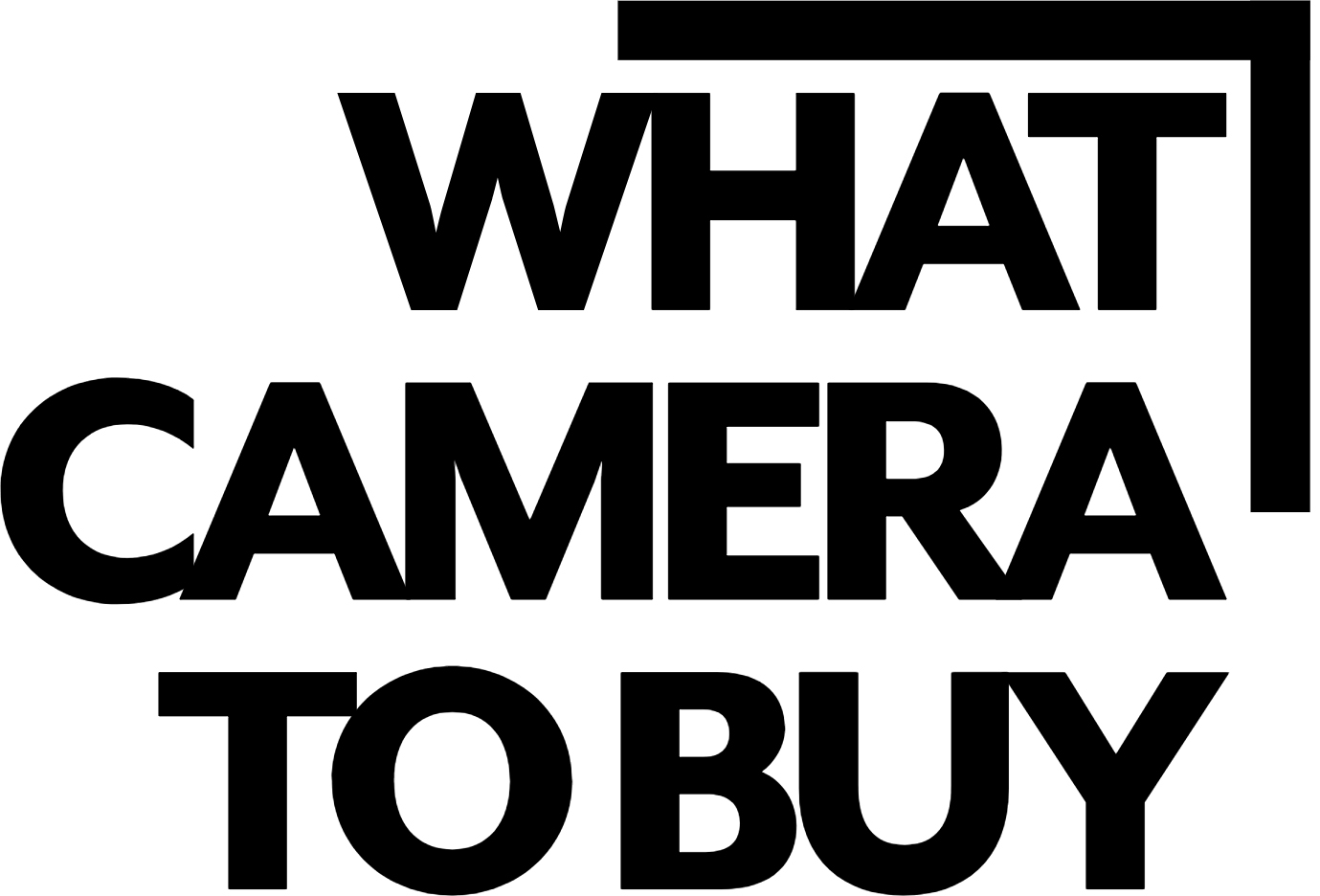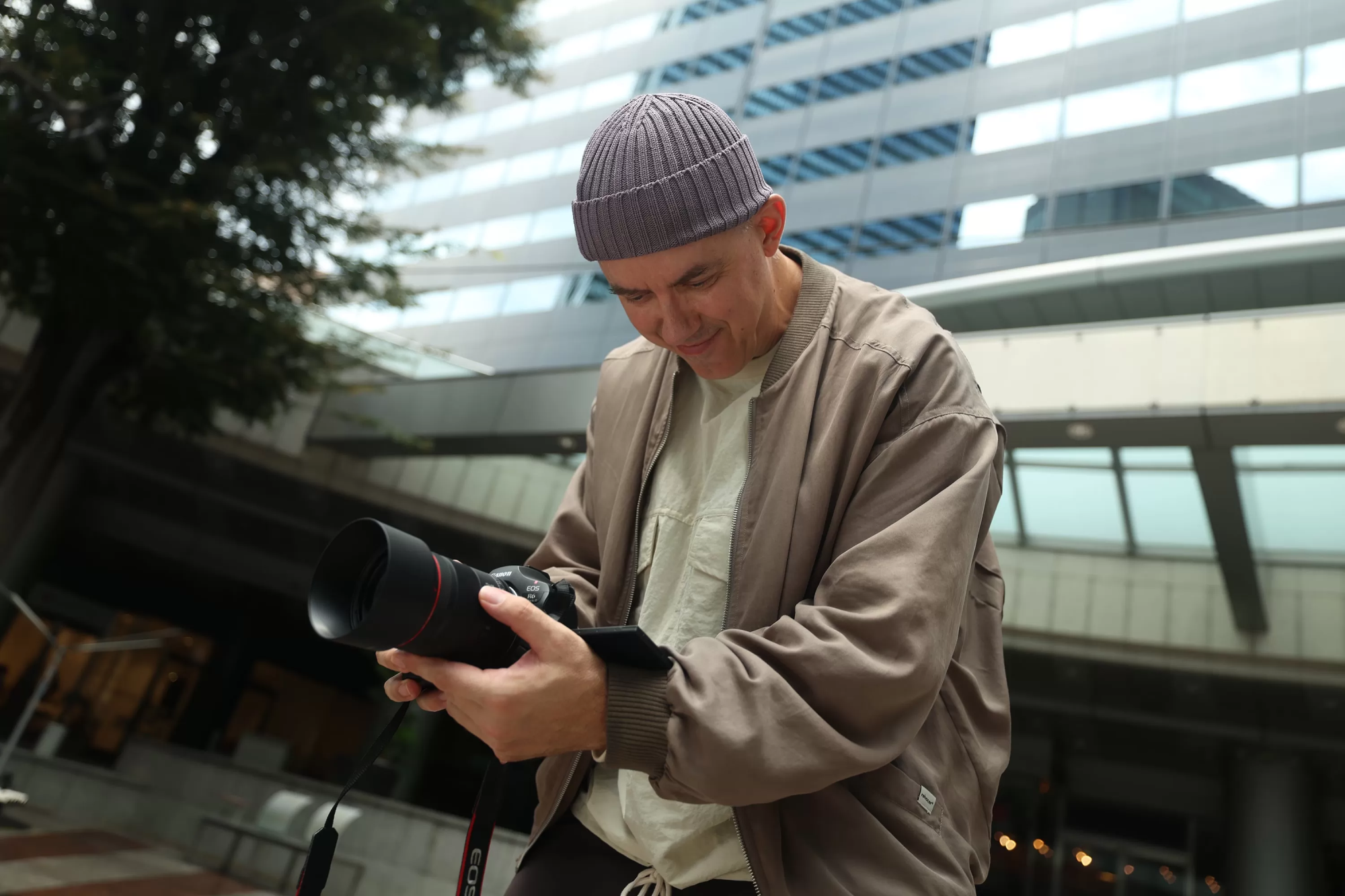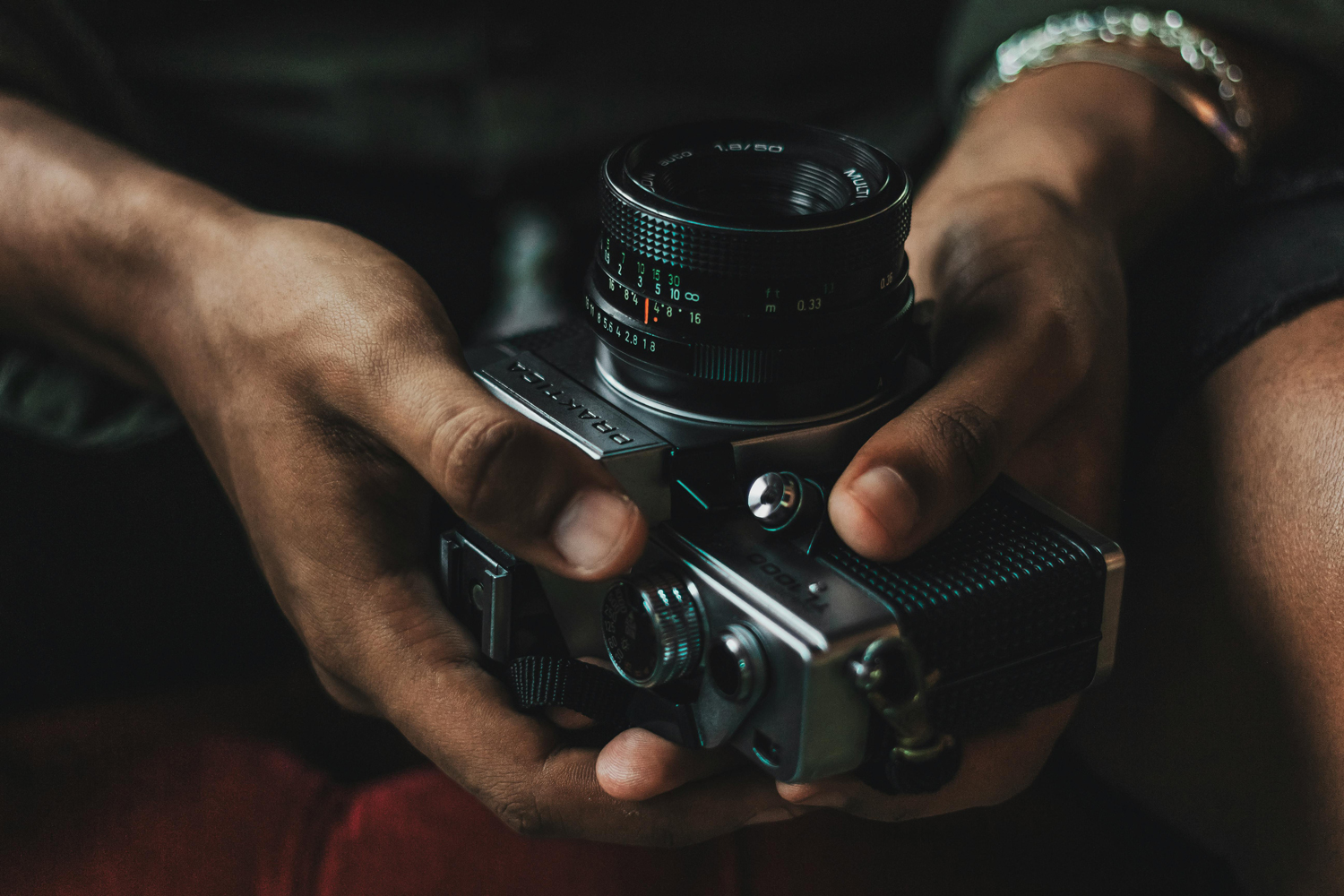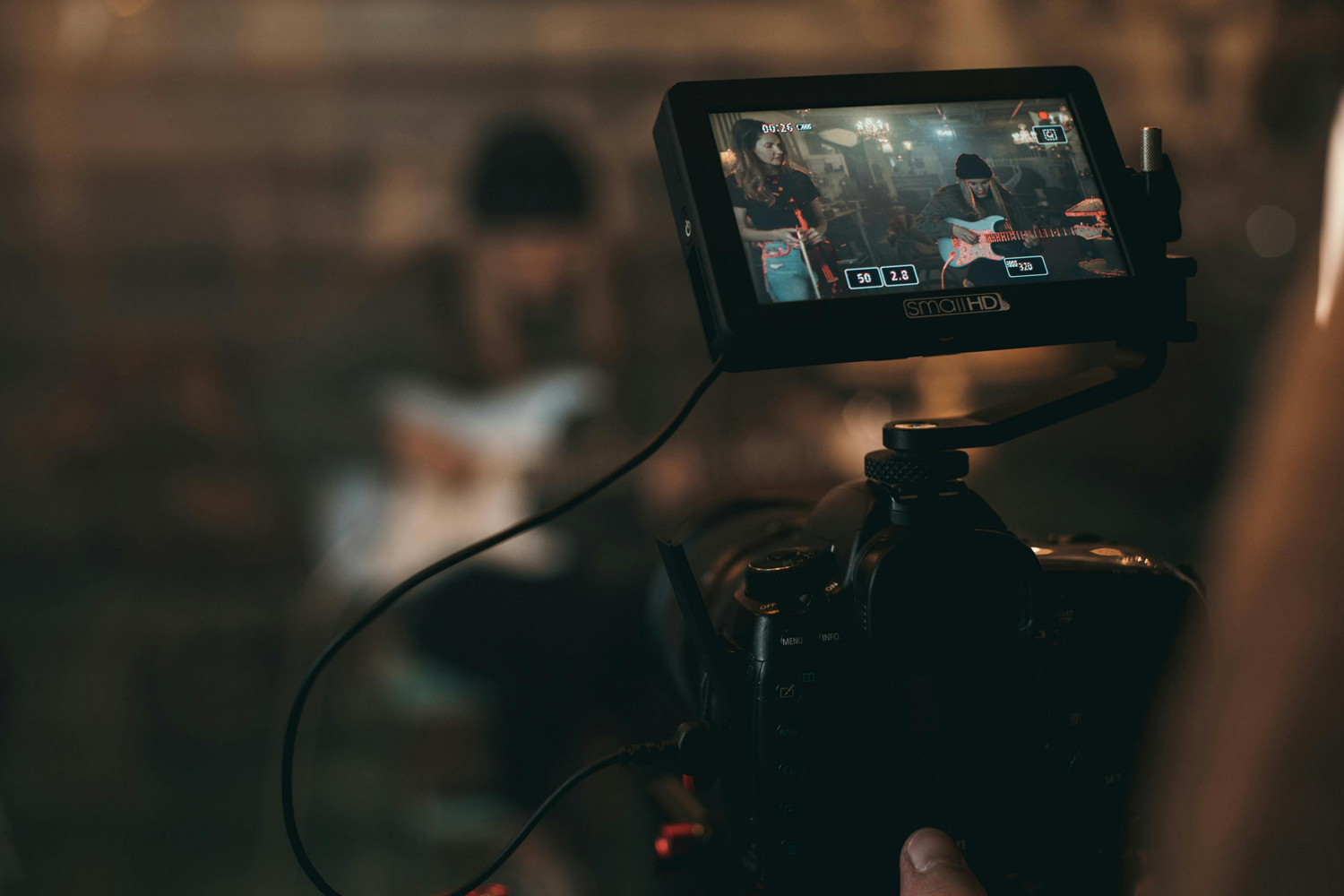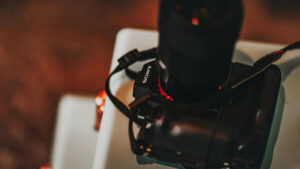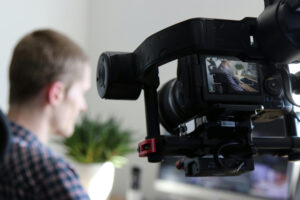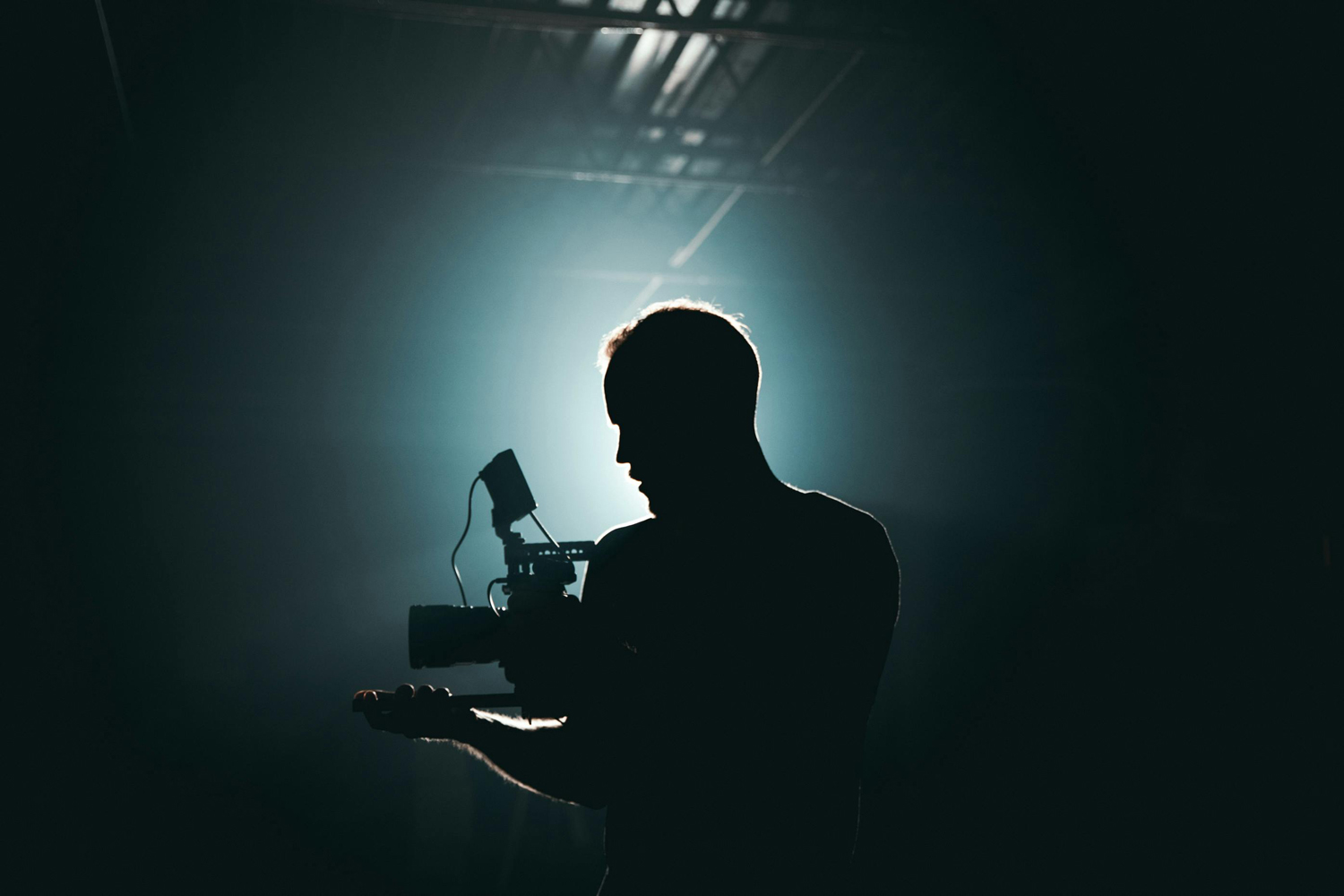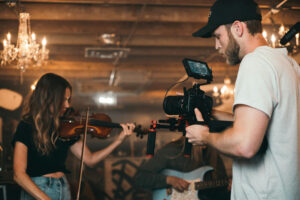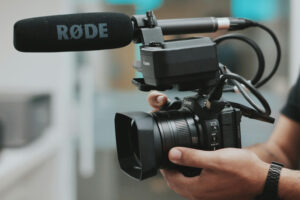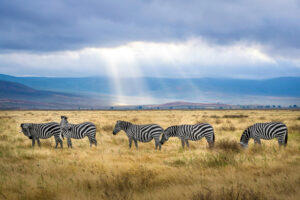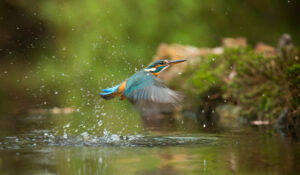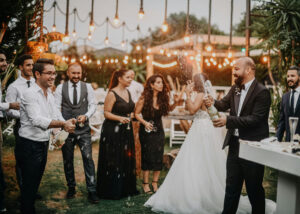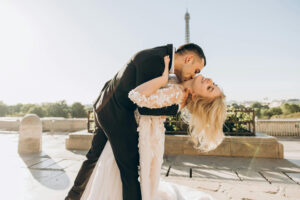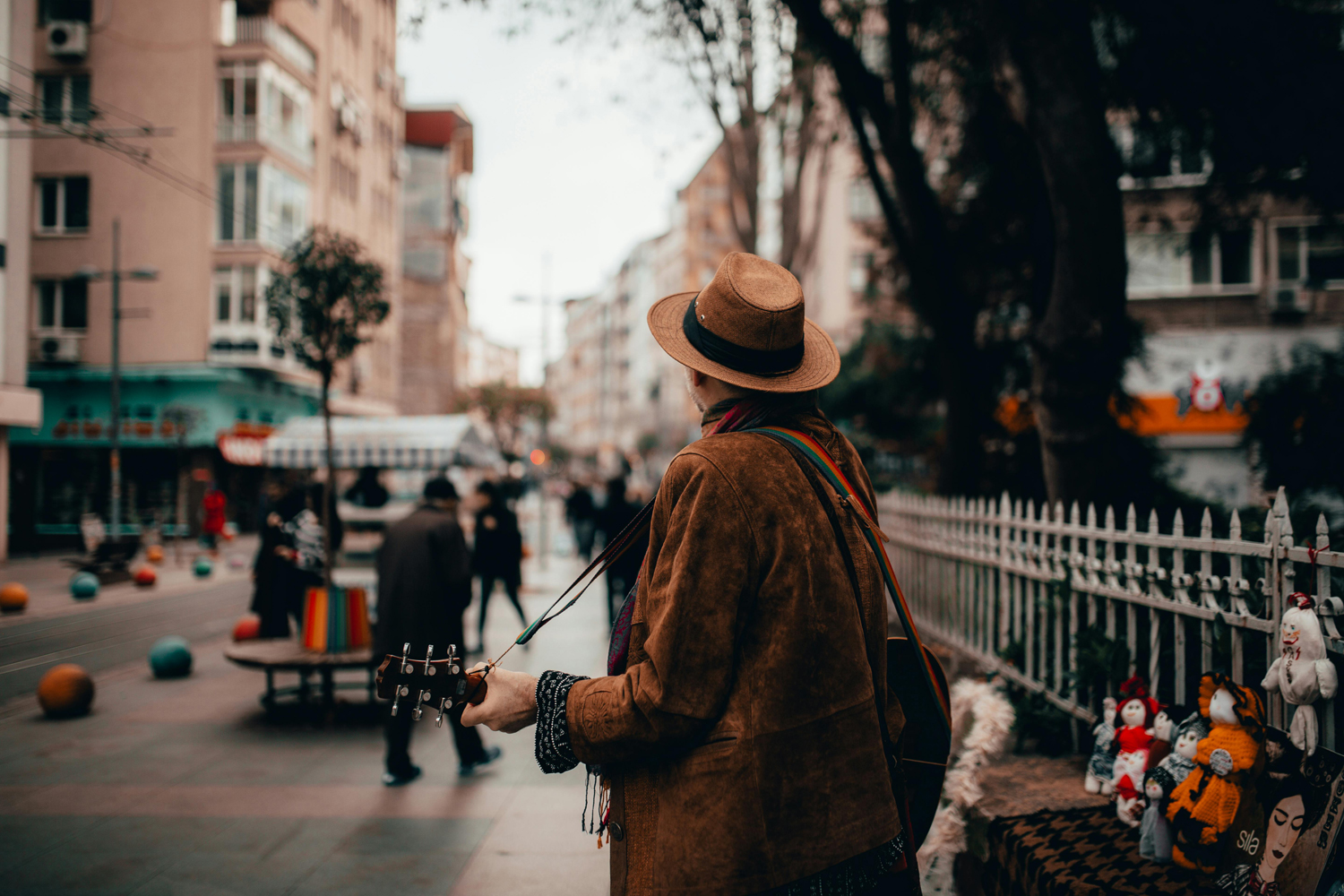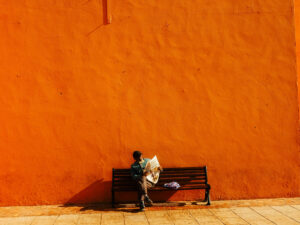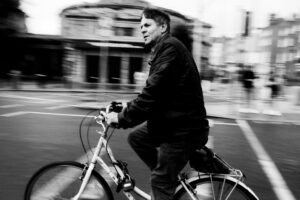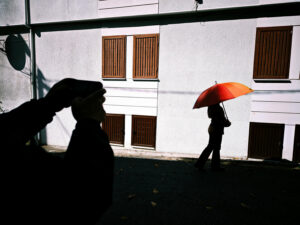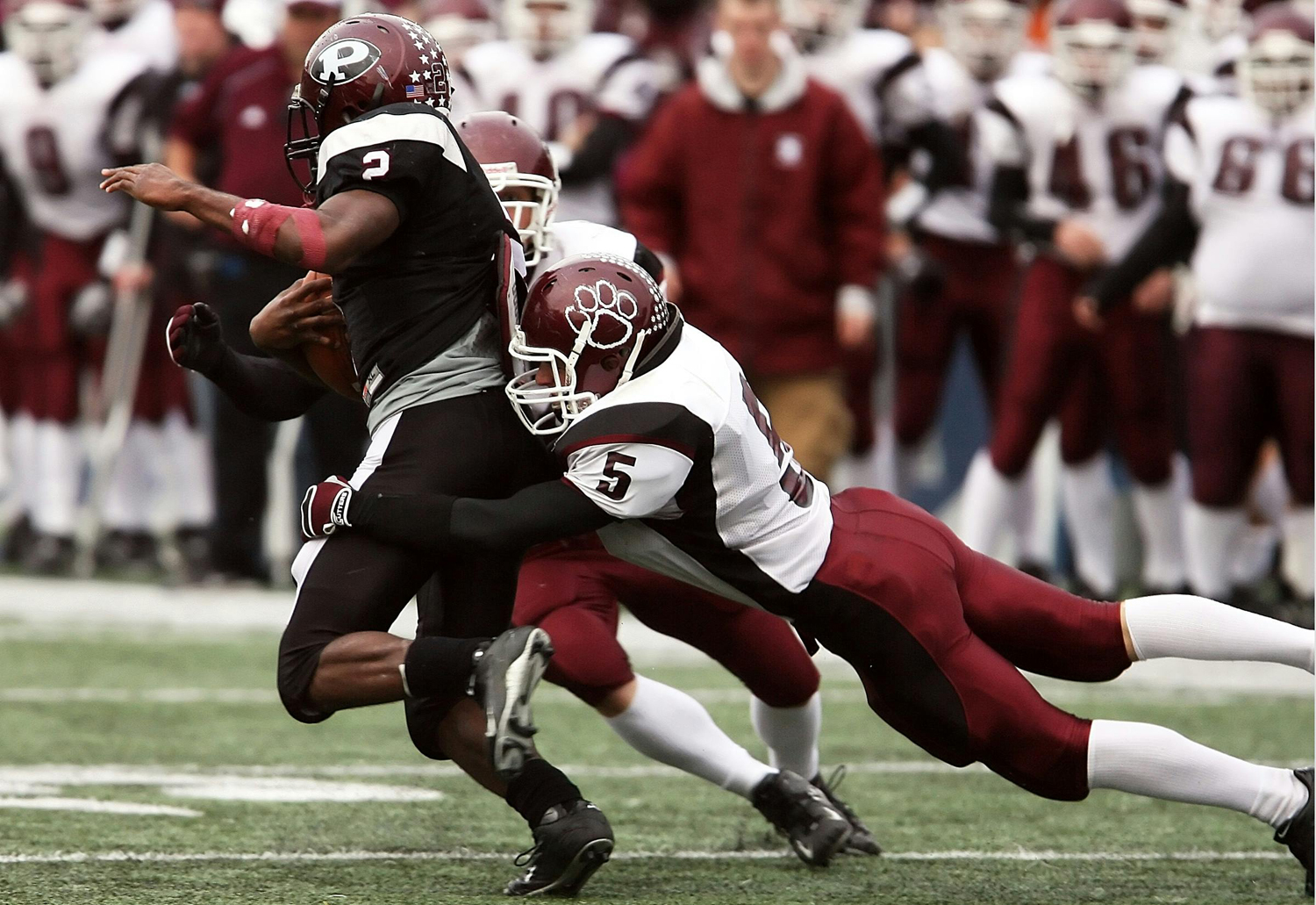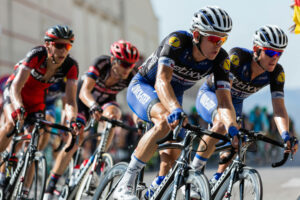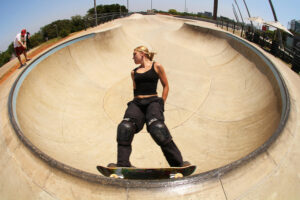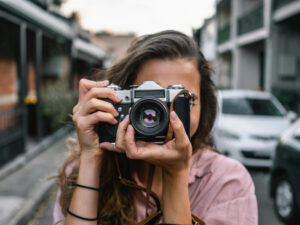Canon EOS R6 Mark III Review: 32.5MP, 40FPS, 7K Video – The New Hybrid King
Introduction: The Bar Has Been Raised for the Hybrid Shooter
In the ever-evolving landscape of full-frame mirrorless cameras, few models have garnered as much anticipation and speculation as the Canon EOS R6 series. Known for its perfect balance of professional performance, responsive handling, and accessible pricing, the R6 has long been the gold standard for content creators who equally rely on stellar stills and robust video capabilities. Now, Canon has officially unveiled its successor, the Canon EOS R6 Mark III, and it’s a release that redefines the term "hybrid powerhouse."
This is not just an iterative update; it is a seismic shift that pulls the R6 line firmly into new, high-resolution, high-speed territory. With a brand-new 32.5 MP full-frame sensor, a blistering 40 frames-per-second electronic shutter, and stunning 7K video capture, the R6 Mark III sets an aggressive new benchmark. It takes the beloved, do-everything essence of its predecessors and infuses it with features previously reserved for higher-tier professional cinema and sports bodies.
For professional photographers, serious enthusiasts, and, most critically, the new generation of content creators needing a single, uncompromising tool, the R6 Mark III promises to deliver. Our deep-dive review explores every major specification, detail, and feature of this camera, giving you the definitive look at the future of the full-frame mirrorless camera market. We will explore how this camera bridges the gap between enthusiast and professional use, offering increased resolution, stronger subject detection, and cutting-edge recording formats that will future-proof your work.
The New Heart of the Hybrid Shooter: Sensor and Performance
The most significant upgrade in the Canon EOS R6 Mark III begins right at its core: a brand-new 32.5 MP full-frame Canon CMOS sensor. This resolution bump from the 20MP sensor of the previous generation is a game-changer, addressing one of the most common requests from the R6 user base. Paired with the robust DIGIC X processor, this sensor doesn’t just deliver more pixels; it unlocks entirely new dimensions of speed and versatility.
32.5 Megapixels: Detail and Cropping Latitude
The move to 32.5MP is strategically brilliant. It places the R6 Mark III in a sweet spot, offering significantly more detail than its predecessor and greater flexibility for print, fine-art work, and, perhaps most importantly for sports and wildlife photographers, immense cropping latitude. When you’re dealing with distant subjects, the ability to crop aggressively without compromising image quality is paramount. This resolution increase provides that crucial headroom while maintaining the responsive, low-noise performance the R6 line is known for. It ensures that the Mark III is not just a high-speed body, but a high-resolution contender as well.
Unprecedented Speed: 40 FPS Electronic Shutter
Speed is where the R6 Mark III truly separates itself from the competition. While the mechanical and electronic first curtain shutters cap out at a dependable 12 fps—rated for a phenomenal 500,000 cycles—it’s the electronic shutter that makes history. The camera is now capable of a mind-blowing 40 frames per second (40 fps) burst rate. This level of speed ensures that photographers can capture the absolute peak moment of any fleeting action—whether it’s a hummingbird in flight, a game-winning goal, or a dramatic expression.
This performance is made possible by a rolling readout speed that has been significantly optimized, minimizing the rolling shutter effect and making the 40 fps mode genuinely usable for action, sports, and fast-paced events.
The "Unmissable Moment" Feature: Pre-Capture Buffer
Canon has introduced a revolutionary tool for unpredictable action: the Pre-Continuous Buffer. When enabled, the camera begins buffering frames before the shutter is fully pressed, capturing up to 20 frames (approximately 0.5 seconds) of action just prior to the decisive moment. For wildlife photographers or parents trying to capture a child's spontaneous reaction, this feature alone justifies the upgrade, drastically increasing the keeper rate for moments that are simply too fast for human reaction time.
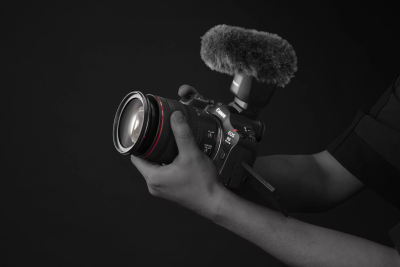
A Filmmaker's Dream: Unprecedented Video Capabilities
The 'hybrid' mandate of the R6 series means its video performance must be as compelling as its stills, and the Canon EOS R6 Mark III delivers with features that borrow heavily from Canon’s Cinema EOS line. The Mark III is built to be a formidable filmmaking tool, introducing high-resolution raw capture that will delight professional videographers.
7K Raw and Open Gate: Future-Proofing Your Footage
The headlining video spec is the introduction of 7K recording. The camera can capture up to 7K/59.94p raw light, providing a robust, highly malleable file for intensive color grading and post-production. Furthermore, a 7K/30p open-gate mode is a key feature for modern content creators.
- 7K Open Gate utilizes the entire sensor area (or close to it), maximizing vertical resolution and offering critical latitude for post-production stabilization and reframing. This is essential for creators who need to deliver content in multiple aspect ratios, such as 16:9 for YouTube and 9:16 for social media platforms like TikTok and Instagram Reels, all from a single recording.
For more common delivery standards, the Mark III offers oversampled 4K/60p and 4K/30p. This means the camera takes the abundant data from the 7K-capable sensor and downsamples it to 4K, resulting in a cleaner, sharper, and more detailed final 4K image than native 4K capture.
Advanced Codecs and Monitoring
Professional workflows demand professional tools, and the R6 Mark III includes the full suite:
- Canon Log 2 and Log 3: These logarithmic profiles maximize the dynamic range of the footage, preserving detail in highlights and shadows and providing maximum flexibility for color grading.
- 4K High Frame Rate: For stunning cinematic slow motion, the camera hits 4K/119.9p.
- Waveform Display: For precise exposure control, the Mark III adds waveform monitoring directly to the display, a feature often exclusive to cinema cameras.
Overheating Guidance and Workflow Reliability
A common concern with high-resolution, high-bitrate cameras is thermal management. Canon has proactively addressed this by publishing detailed thermal guidance. Crucially, several 4K modes are rated with “no overheating restrictions,” allowing for extended, worry-free shooting. While high-bitrate modes like 7K raw and 4K/119.9p have documented shutdown windows, the clear guidance allows filmmakers to plan long takes with confidence. The maximum per-clip duration is also extended to an impressive 6 hours below 100 fps and 2 hours at 100 fps or higher.
Autofocus and Stabilization: Precision in Motion
The responsiveness and intelligence of the focus system are critical to a modern hybrid camera. The Canon R6 Mark III builds on Canon’s industry-leading autofocus system, pushing its sensitivity and subject-tracking intelligence further than ever before.
Dual Pixel CMOS AF Excellence
The Mark III utilizes the renowned Dual Pixel CMOS AF system across approximately 100% of the sensor area. Its ability to lock focus is cited down to an incredibly dark EV -6.5 for stills, making it a reliable performer in extreme low-light environments like wedding receptions, theater productions, or night shoots. The system offers up to 6,097 user-selectable AF positions and a complex auto-selection system with up to 1,053 zones, ensuring coverage no matter where the subject is positioned.
Deeper Subject Detection
Canon has refined the subject-detection algorithms, allowing the camera to track a broader range of subjects (including people, animals, and vehicles) with greater tenacity and accuracy. The focus system can now better follow subjects through complex, cluttered backgrounds, maintaining a lock on the eye, face, or body. Furthermore, the inclusion of video-centric focus features, such as Focus Accel/Decel tuning, allows videographers to dial in more predictable and cinematic focus pulls, drawing directly from the professional Canon Cinema EOS pedigree.
Class-Leading In-Body Image Stabilization (IBIS)
Handheld shooting is made viable in nearly any situation thanks to the camera’s powerful In-Body Image Stabilization (IBIS) system. The R6 Mark III is rated up to a staggering 8.5 stops of correction at the image center when paired with select RF lenses that feature optical stabilization (Coordinated IS). Even at the periphery of the image, the system is rated for 7.5 stops of correction, significantly reducing reliance on tripods and cumbersome gimbals.
For video, the camera adds Movie Digital IS for an extra layer of electronic stabilization. A useful new niche tool is the subject-tracking IS mode for video, which locks the stabilization to your tracked subject, keeping them fixed within the frame as you move, which is fantastic for dynamic documentary or wedding work.

Design and Workflow: Built for the Grind
The Canon EOS R6 Mark III maintains the familiar, robust body style of its predecessors, built for reliability and comfort. The chassis is primarily constructed of magnesium alloy, offering a solid feel and enhanced durability while keeping the body-only weight to a respectable 609g. This commitment to a familiar design means existing R-system users will find the Mark III immediately comfortable in hand.
High-Resolution Viewfinder and LCD
The visual interface has seen key upgrades for a better shooting experience:
- EVF: A high-resolution 0.5-inch OLED Electronic Viewfinder with approximately 3.96-million dots provides a crisp, detailed view of the scene. It includes a 119.88 fps “Smooth” display option for lag-free tracking of fast-moving subjects.
- Rear LCD: The fully articulating 3.0-inch, 1.62-million-dot touchscreen remains a staple, offering flexibility for high- and low-angle shooting and self-filming.
Professional Connectivity and Dual Card Slots
For a professional-grade camera, robust connectivity and reliable media management are non-negotiable.
- I/O: The R6 Mark III upgrades connectivity with a full-size HDMI Type-A port, providing secure and reliable output to external monitors and recorders (a major quality-of-life improvement over the smaller Mini/Micro HDMI ports found on many cameras). The USB-C port is rated for a speedy 10 Gbps transfer rate, making tethered shooting and media offloading efficient. Dedicated 3.5 mm mic and headphone jacks ensure professional audio capture and monitoring. The camera also supports 4K UVC/UAC USB streaming up to 4K/60p.
- Dual Media Strategy: The dual card slots utilize a sophisticated, workflow-friendly strategy: one CFexpress Type B slot (Slot 1) and one SDXC UHS-II slot (Slot 2). This mixed-media approach leverages the speed of CFexpress B for high-bitrate, high-frame-rate, and raw video recording, while the ubiquitous SD slot serves for backup, relay recording, or sub-recording. Crucially, the camera supports proxy and sub-recording options, allowing users to record high-quality main files to the CFexpress B card and smaller, easier-to-edit proxy files or compressed main files to the SD card simultaneously, streamlining post-production.
Battery System
The body uses the new LP-E6P battery, while the older LP-E6N and LP-E6NH batteries remain usable with certain functional limitations. The CIPA rating provides up to approximately 390 shots via the EVF (in power-saving mode) or 620 shots via the LCD, demonstrating efficient power management despite the camera's processing demands.
R6 Mark III vs. The Competition: A Hybrid Benchmark
The Canon EOS R6 Mark III lands squarely in the "prosumer" or advanced enthusiast category, but its feature set puts considerable pressure on higher-tier competitors, including Canon’s own R5 line.
The 32.5MP Advantage
The jump to 32.5MP is arguably the most market-defining specification. It directly challenges competitors who have focused on either lower resolution/higher speed or higher resolution/lower speed. The R6 Mark III achieves an unprecedented blend: High Resolution (more than 30MP) and High Speed (40 fps) and Professional Video (7K Raw). This triangulation of capabilities makes it the single most versatile body for photographers who require both large prints and fast burst rates, or filmmakers who need both high-resolution video and significant stills performance.
Bridging Enthusiast and Professional Use
Canon has successfully positioned the Mark III as the essential bridge camera. For the enthusiast moving into professional client work, the camera offers accessible ergonomics, deep automation, and an affordable entry point. For the working professional, the 7K open gate, Canon Log 2/3, waveform monitor, and CFexpress/SD dual-slot configuration provide the necessary tools for seamless integration into high-end cinema and broadcast workflows. The documented thermal performance further solidifies its standing as a reliable workhorse.
Pricing, Availability, and Final Verdict
The Canon EOS R6 Mark III is a culmination of years of Canon innovation, leveraging its decades of experience in both the consumer DSLR/Mirrorless and professional Cinema markets. It is a thoughtful, user-centric iteration that elevates every core aspect of the hybrid shooting experience.
Configuration and Estimated Pricing
Canon lists the R6 Mark III body-only at an estimated price of $2,799.00, making it a highly competitive offering given its feature set. Kits will also be available, including:
- Body-only: $2,799.00
- Kit with Canon RF24-105 F4 L IS USM: $4,049.00
- Kit with Canon RF24-105 F4-7.1 IS STM USM: $3,149.00
The camera is expected to be available in November 2025, arriving just in time to capture the holiday season and marking a monumental release for the end of the year.
The Final Word: The Ultimate Hybrid Tool
The Canon EOS R6 Mark III is the camera that many content creators and hybrid shooters have been waiting for. It addresses past limitations (resolution) while pushing the boundaries of what is possible in this class (40 fps, 7K Raw). It's a camera built for the modern creator—one who might be shooting high-speed action on Saturday and an intensive client video on Monday.
The seamless integration of a high-resolution sensor, lightning-fast capture rates, industry-leading IBIS, and cinema-grade video tools places the R6 Mark III squarely as the ultimate full-frame mirrorless hybrid camera on the market. If you are looking for a single body that offers zero compromises between stills and video, the R6 Mark III is not just an option; it is the definitive choice.
Beyond the Numbers: Why the Best Gear Disappears in Your Hands
Why the Best Gear Disappears in Your Hands?

When you're shopping for a camera, it's easy to get caught up in the numbers. We’re constantly bombarded with marketing that highlights impressive specs like megapixel counts, ISO ranges, and continuous shooting speeds. These figures look great on a spec sheet, but they often have little to do with the actual experience of creating images. The truth is, a camera's true value lies not in its technical prowess but in its design and how it fits into your workflow.
Many photographers find themselves with a technically superior camera that they rarely use because the experience is frustrating or uncomfortable. The features that make a camera a joy to pick up and shoot with—things you can't measure with a number—are often the ones that get overlooked. Seasoned professionals know this and often prioritize a camera's feel and responsiveness over a marginal boost in resolution or autofocus points. They understand that a camera that feels like a natural extension of their hand is far more valuable than one with a list of impressive, but ultimately unused, features.
This article explores five crucial, often-ignored, factors that determine whether a camera becomes a beloved creative tool or an expensive paperweight.
The Physical Connection: Grip and Control Layout
A camera is a tool, and like any tool, its effectiveness is deeply tied to how it feels in your hands. A well-designed camera body fits snugly, allowing you to hold it securely without strain, and its controls are positioned logically so you can operate them without taking your eye from the viewfinder. An ill-fitting grip can lead to hand fatigue and even camera shake, especially during long shoots with heavy lenses. The placement of buttons and dials is equally critical; if you have to hunt for the ISO or change an aperture setting, you'll break your creative focus and risk missing a shot.
Consider how a camera's weight and balance shift when you attach a lens. Some bodies, particularly those that are small and light, can become front-heavy with a larger zoom lens, making them awkward and difficult to handle. On the other hand, a camera with a robust, well-defined grip will feel secure and balanced across a range of lenses.
The only way to truly test a camera's ergonomics is to hold it yourself, ideally with a lens similar to what you'll be using. A five-minute test in a store isn't enough; try holding it for ten or fifteen minutes to see how it feels. Check if your thumb and fingers fall naturally onto the key controls. A camera that feels awkward for a few minutes will become a significant source of frustration over a full day of shooting.
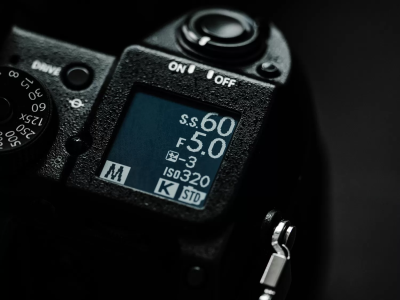
The Mental Interface: Menus and Customization
Your camera's menu system is the brain of the device, and a poorly organized one can be a major source of frustration. A bad menu forces you to dive through multiple sub-menus to find simple settings, disrupting your flow and eating up precious seconds. Imagine needing to quickly change your white balance or autofocus mode during a fast-paced event—if you can't find the setting in seconds, you've likely missed the moment.
Beyond the main menu, the ability to customize your controls and a quick menu is a game-changer. This allows you to create your own personalized interface, placing your most-used settings—like ISO, drive mode, or image quality—on a single, easily accessible screen. Cameras with limited customization force you to work within the manufacturer's assumptions, but a highly customizable camera adapts to your unique workflow.
Fujifilm is often praised for its intuitive, well-structured menus, while older Sony models were infamous for their labyrinthine systems before they were significantly improved. When evaluating a new camera, don't just glance at the menus—actually navigate them. See how many clicks it takes to change a critical setting. Can you create a quick menu that has everything you need? The answer to these questions will reveal how enjoyable the camera is to use in the long run.
Framing Your Vision: Screen Articulation
The rear LCD screen's design is more than a minor detail; it fundamentally changes how you compose your shots. There are two main types of articulation: tilt-only and fully articulating. A tilt-only screen moves up and down, making it useful for low-angle or overhead shots, but it lacks the flexibility to shoot from the side or to face forward.
A fully articulating screen offers complete freedom. It can pivot out to the side and rotate in almost any direction, which is invaluable for creative compositions, video work, and selfies. This type of screen can also be flipped inward to protect the LCD from scratches and bumps during transport.
Your choice should be based on your personal shooting style. Landscape photographers who often use a tripod might find a tilt-only screen perfectly sufficient. Event and portrait photographers, however, will appreciate the flexibility of a fully articulating screen for composing shots from unconventional angles. For vloggers and content creators, a front-facing screen is practically a necessity. A tilt-only screen might be a dealbreaker if you shoot video or often find yourself in situations where you need to see yourself on screen.
All-Weather Confidence: The Reality of Weather-Sealing
Weather-sealing is not a binary feature. A camera might claim to be "weather-sealed," but this could mean anything from minimal protection against a light drizzle to a truly sealed body designed to withstand heavy rain and dusty conditions. This lack of clear definition from manufacturers can be misleading. Professional-grade weather-sealing involves comprehensive gaskets around every button, dial, and port, creating a barrier that prevents moisture and dust from entering the camera's delicate electronics.
For photographers who work outdoors, this is a critical, not optional, feature. A wedding photographer needs to be able to continue shooting when a surprise shower hits, and a landscape photographer must be confident in their gear when fog rolls in or winds kick up dust. Inadequate weather protection forces you to choose between protecting your gear and getting the shot—a choice no professional wants to make. The mental burden of constantly worrying about your camera in poor conditions is a significant drawback.
Researching a camera's true weather resistance requires more than just reading the spec sheet. Look for detailed user reviews and teardown videos that show the actual gaskets and seals. Brands like OM System (formerly Olympus) and Pentax have built strong reputations for their robust weather-sealing, often outperforming more expensive cameras from other brands. Remember that a weather-sealed body is only as good as its weakest link, so always pair it with a weather-sealed lens for full protection.
Personalizing the Tool: Custom Functions
A camera is more than just a box that takes pictures; it should be a tool that enhances your creative process. The level of customization available on a camera determines how well it can adapt to your evolving style. Some cameras allow you to reassign nearly every button and dial, while others offer only minimal options. This deep level of customization allows you to streamline your workflow and make the camera feel uniquely yours.
One of the most powerful but underutilized features is custom shooting modes. These modes allow you to save a complete camera setup—including everything from your exposure settings and autofocus modes to specific menu preferences—and recall it instantly with the turn of a dial. This eliminates the need to manually adjust dozens of settings when switching between different shooting scenarios, like moving from a portrait session to a landscape shot.
Canon and Fujifilm, for example, have made significant strides in their customization options, allowing users to tailor their cameras to a high degree. My Canon R5, for instance, lets me assign my preferred Eye AF setting to a button I never use for its original purpose, providing a quick and efficient way to switch focus during a chaotic event. When you're considering a new camera, look beyond simple button assignments. Can you truly make the camera operate the way you think and shoot?
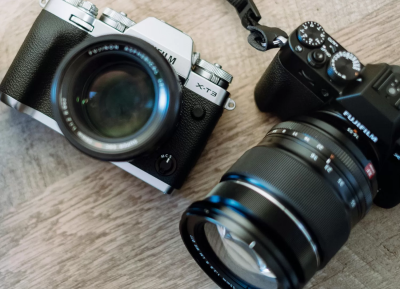
In Conclusion: The True Measure of a Camera
The most impressive camera specifications are meaningless if the camera itself is a chore to use. A camera with fantastic ergonomics, a logical menu system, and the right physical features will inspire you to shoot more and think less about your gear. The cost of a bad camera choice isn't just the money you spent; it's the missed creative opportunities and the growing sense of frustration that comes from fighting your own equipment. Choosing the right camera is less about buying the best technical machine and more about finding a partner for your creative journey.
Fujifilm X-T30 III Review: Fujifilm’s Compact Mirrorless Just Got Sharper, Smarter, and More Fun
Fujifilm X-T30 III Review: Fujifilm’s Compact Mirrorless Just Got Sharper, Smarter, and More Fun

Introduction
Fujifilm’s beloved X-T30 line has long been a favorite for photographers who crave analog charm, creative control, and top-tier image quality in a compact body. With the release of the Fujifilm X-T30 III, the brand adds some welcome refinements — faster processing, smarter autofocus, and a dash of creative flair — while keeping the retro-inspired design that fans adore.
At $999 body-only (or $1,149 with the new 13-33 mm F3.5-6.3 OIS kit lens), the X-T30 III sits squarely in the mid-range mirrorless market, competing head-to-head with the Canon EOS R10, Nikon Z50 II, and its bigger sibling, the Fujifilm X-S20.
This review explores how the X-T30 III blends Fujifilm’s film heritage with cutting-edge digital tech — and whether it’s the right camera for you.
What’s New in the X-T30 III?
The X-T30 III isn’t a radical redesign, but a smart evolution. Here’s what’s changed:
- New processor: Brings faster performance and improved subject recognition autofocus, on par with Fujifilm’s higher-end X-T50 and X-M5.
- Film Simulation Dial: Replaces the Drive Mode dial, offering three customizable “recipe” slots for your favorite looks — from Classic Chrome to Eterna Bleach Bypass.
- Enhanced video options: Shoots 6.2K open-gate at 30 fps and 4K 60 p with a slight 1.18× crop.
- New wide-angle kit lens: The 13–33 mm F3.5-6.3 OIS zoom (20–50 mm equivalent) gives vloggers and landscape shooters a fresh perspective.
Fujifilm hasn’t reinvented the wheel here — but they’ve tuned it beautifully.
Design and Handling: Vintage Charm, Modern Touches
The X-T30 III stays true to Fujifilm’s DNA: tactile dials, compact build, and an unmistakable retro aesthetic.
At just 378 g, it’s one of the lightest mirrorless cameras in its class, making it perfect for travel, street, and everyday photography. Despite the small size, it offers an impressive degree of manual control — two clickable command dials, an exposure-compensation dial, and a dedicated shutter-speed dial.
You’ll also find:
- Six customizable buttons
- A responsive AF joystick
- Swipe gestures on the touchscreen
The ergonomics can feel cramped for users with larger hands, but that’s the trade-off for portability. The tactile rubber grip helps it feel more secure than its size suggests.
Connectivity & Ports
The X-T30 III keeps things minimal but versatile:
- 2.5 mm mic/remote jack (requires adapter for most mics)
- USB-C port for charging, data transfer, and headphone monitoring via adapter
- Micro HDMI output for clean external recording
It’s a simple but capable setup for hybrid shooters — though vloggers may prefer the X-S20, which includes full-size 3.5 mm jacks and IBIS.
Fujifilm’s Signature Colors: Now Even More Accessible
One of Fujifilm’s enduring strengths is its Film Simulation modes, which replicate the look of classic film stocks while offering distinctive digital color science.
With the X-T30 III’s new Film Simulation Dial, users can store three personalized “recipes,” combining simulation type, contrast tweaks, and white-balance shifts. For creators who love shooting straight out of camera (SOOC), this feature is a dream.
Popular looks include:
- Provia / Velvia / Astia – Fujifilm’s core trio for natural to vivid tones
- Classic Chrome – Muted contrast with cinematic color
- Eterna Bleach Bypass – Modern, desaturated elegance
This makes the X-T30 III as much a creative tool as a camera — ideal for photographers and content creators who want professional color without endless editing.
Image Quality: Familiar Sensor, Excellent Results
The camera uses the proven 26 MP X-Trans BSI CMOS sensor, found in the X-S20 and X-M5. It delivers sharp, detailed images with excellent dynamic range and Fujifilm’s trademark color rendering.
Noise control remains impressive up to ISO 6400, and JPEG output is stellar. RAW files still require proper demosaicing (X-Trans files can be tricky), but once processed, they rival any APS-C sensor in this range.
Photographers who shoot landscapes, portraits, or travel will appreciate the balance between resolution, color, and speed.
Autofocus: Smarter and Faster

The X-T30 III’s upgraded processor powers subject-recognition autofocus, capable of detecting faces, eyes, animals, cars, planes, and trains. While not quite as sticky as Canon’s Dual Pixel AF II or Nikon’s latest tracking, it’s a big leap forward from the X-T30 II.
AF performance is fast and confident in good light, though continuous tracking can falter in very low light. For casual sports, events, and daily photography, it performs admirably.
Video Performance: A Capable Hybrid (With Limits)
The X-T30 III can shoot:
- 6.2K open-gate footage at 30 fps (full-sensor)
- 4K 60 p with 1.18× crop
- 1080 p up to 240 fps for slow-motion work
Rolling-shutter performance is solid, and colors straight from the camera are beautiful. However, without in-body stabilization, handheld footage can get shaky.
If video is your priority, consider:
- 🟢 Fujifilm X-S20 – adds IBIS and full audio ports
- 🟢 Panasonic G9 II – stronger stabilization, more pro-video optionsWhat Camera to Buy for Video Shooters
Still, for hybrid shooters who film occasionally, the X-T30 III delivers excellent 4K image quality and Fujifilm’s cinematic color science.
Battery Life & Power Options
Powered by the NP-W126S battery, the X-T30 III offers around 315 shots per charge (or up to 425 in Economy mode). That’s above average for its class, though long video sessions will drain it quickly.
The camera supports USB-C charging, allowing you to power it with a power bank on the go — a small but essential convenience for travel and vlogging.
How It Compares: Canon, Nikon, and Fujifilm Rivals
| Model | Price | Sensor | Stabilization | Video | Battery | Weight |
|---|---|---|---|---|---|---|
| Fujifilm X-T30 III | $999 | 26 MP APS-C X-Trans | Lens only | 6.2K/30, 4K/60 | 315 | 378 g |
| Canon EOS R10 | $1,099 | 24 MP APS-C | Lens only | 4K/60 (1.6× crop) | 350 | 429 g |
| Nikon Z50 II | $1,010 | 21 MP APS-C | Lens only | 4K/30 (no crop) | 230 | 550 g |
| Fujifilm X-S20 | $1,499 | 26 MP APS-C | IBIS (7 stops) | 6.2K/30, 4K/60 | 750 | 491 g |
The Canon EOS R10 offers slightly better continuous AF and ergonomics, while the Nikon Z50 II remains a strong all-rounder. But none match Fujifilm’s film simulations or design charm.
If you’re a Fujifilm fan who doesn’t need in-body stabilization, the X-T30 III hits a sweet spot of price, performance, and creativity.
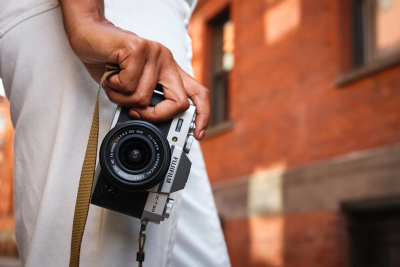
Real-World Experience: Small Body, Big Personality
During testing, reviewers praised the camera’s image quality and responsiveness but noted some quirks:
- The front dial is sensitive and easy to press accidentally.
- The compact body can feel cramped for manual shooters.
- Buttons like the Q-menu can be triggered unintentionally, especially with gloves.
However, with Fujifilm’s deep customization options, these issues can be fine-tuned away.
The new 13-33 mm kit lens also stands out: it’s sharper than expected and far wider than the standard 15–45 mm kits from competitors — perfect for travel, interiors, and vlogs.
Who Should Buy the Fujifilm X-T30 III?
Buy it if you:
✅ Love Fujifilm’s color science and retro handling
✅ Want a compact mirrorless camera for travel or content creation
✅ Appreciate manual dials and tactile control
✅ Value photo quality and creativity over stabilization
Skip it if you:
❌ Prioritize handheld video (get the X-S20 instead)
❌ Need weather sealing or full-frame performance
❌ Prefer deep grips and large control layouts
Verdict: Refinement Over Reinvention
The Fujifilm X-T30 III isn’t here to revolutionize — it’s here to perfect the formula. It delivers everything photographers loved about its predecessor, plus smarter autofocus, faster processing, richer video modes, and a creative twist with its Film Simulation dial.
While it lacks in-body stabilization and can feel tight for larger hands, its image quality, portability, and artistic flexibility make it one of the best sub-$1000 mirrorless cameras of 2025. see: Best Mirrorless Cameras Under $1000
If you’re stepping into the Fujifilm ecosystem or upgrading from an older X-T model, the X-T30 III is a refined, inspiring camera that balances nostalgia with modern performance.
⭐ Final Rating: 4 / 5
Pros:
✔ Excellent image quality
✔ Creative Film Simulation dial
✔ Compact, lightweight build
✔ Beautiful color science
✔ Competitive video specs
Cons:
✖ No in-body stabilization
✖ Tight control layout
✖ Small buffer for high-speed bursts
Pixels Aren't Everything: Why Low Megapixel Count is a Secret Weapon for Video
Why Megapixels Don’t Matter for Video-Centric Cameras like the Sony A7S III?
The Sony A7S III and other video-focused cameras stand out in the market for their exceptional low-light performance and superior video quality, despite having a relatively low megapixel count. This approach is a deliberate design choice that prioritizes the needs of videographers over still photographers. The key to understanding this lies in the fundamental difference between how a camera captures a single photograph and a continuous stream of video.
The Math Behind Video Resolution
Unlike still photography, where a high megapixel count directly translates to a larger, more detailed image, video is constrained by standard resolutions. For a camera to produce 4K video, it only needs a sensor with enough pixels to capture a 3840 x 2160 image. This works out to approximately 8.3 megapixels. Even for 8K video, the requirement is only around 33 megapixels (7680 x 4320). A camera with a 24 or 40-megapixel sensor has a far higher pixel count than what’s needed for 4K video.
So, what happens to all those extra pixels in a high-resolution sensor when shooting video? The camera’s processor must perform a complex process called pixel binning or line skipping to downscale the image to the required video resolution. In pixel binning, the camera combines data from adjacent pixels to create one “super pixel” with more light information. While this can improve the signal-to-noise ratio, it’s not the most efficient use of the sensor’s surface area. Line skipping is a less effective method where the camera simply ignores entire rows of pixels. Both of these processes can introduce artifacts like moire and aliasing, which degrade the final video quality.
The Sony A7S III’s Advantage: The 12.1 MP Sensor
The Sony A7S III’s 12.1-megapixel sensor is not a limitation; it’s a strategic advantage. Its pixel count is just slightly higher than the 8.3 megapixels needed for 4K video. This allows the camera to use a technique called full pixel readout without binning. This means every single pixel on the sensor is used to create the final 4K video image. This process is more efficient, produces a cleaner image, and results in a sharper, more detailed video with none of the moire or aliasing artifacts that plague cameras with higher megapixel counts.
The Power of Larger Photosites
The other major benefit of a lower megapixel count on a full-frame sensor is that each individual pixel, or photosite, can be made physically larger. A 12.1-megapixel full-frame sensor has significantly larger photosites than a 45-megapixel sensor of the same size. These larger photosites are like bigger buckets for collecting light. They can capture more photons in the same amount of time, which translates directly to superior low-light performance and lower image noise.
This is the primary reason the A7S III is known as a low-light beast. Its large photosites allow it to capture clean, usable footage at much higher ISO settings than its high-resolution counterparts. For a videographer, this is a game-changer, as it allows them to shoot in challenging lighting conditions without the need for additional lighting equipment, or to achieve a more cinematic look with a fast lens and a high shutter speed.
A Final Thought: The Trade-off
The decision to buy a camera like the Sony A7S III is a clear trade-off. You’re sacrificing the ability to produce massive, high-resolution still images for unparalleled video performance, especially in low light. For a professional videographer, a film student, or a content creator who primarily works in video, this is a clear win. They don’t need a 60-megapixel image; they need a clean, sharp, and noise-free video file. The megapixel debate is a perfect example of how more is not always better. In the world of video, a lower, more deliberate megapixel count is a sign of a camera built for a specific purpose, and for that purpose, it excels.This SEO configuration is designed to target users searching for information about camera specs, specifically in the context of video, and to position the article as a definitive resource on the topic.
What Camera to Buy for Video Shooters

What Camera to Buy for Video Shooters?
The world of video is a dynamic and creative space, and modern cameras are more capable than ever of capturing stunning moving images. Whether you’re a budding vlogger, an aspiring filmmaker, or a hybrid shooter who needs to do both photo and video, your camera choice will be based on a specific set of criteria. The needs of a video shooter are different from those of a still photographer, with an emphasis on resolution, frame rates, and professional features. This article will guide you through the key features to look for, helping you find a camera that empowers you to create amazing video content.
The Vision in Motion: Essential Camera Features
The best camera for video is one that offers a balance of image quality, professional features, and ease of use.
- Video Resolution and Frame Rates: High-quality video starts with a high resolution. While 1080p Full HD is still standard, shooting in 4K or even higher resolutions gives you more options in post-production. Look for a camera that can shoot in these higher resolutions with high frame rates (e.g., 60p or 120p) for smooth motion and the ability to create slow-motion effects.
- Autofocus for Video: The autofocus system is a critical feature for video. You need a camera with a fast, reliable, and continuous autofocus system that can smoothly track a subject as they move. Advanced features like face and eye detection for video are a huge advantage, as they allow you to focus on your composition and story instead of worrying about a subject going out of focus.
- Audio Inputs: High-quality video needs high-quality audio. A camera with a microphone input is essential for connecting an external microphone, which will provide significantly better sound than the camera’s built-in mic. Some cameras also have a headphone jack, which allows you to monitor your audio levels and ensure your sound is clean and free of distortion.
- Articulating Screen: A fully articulating or flip-out screen is a game-changer for video shooters. It allows you to see yourself when you’re in front of the camera (vlogging), or to shoot from unique angles without having to strain to see the screen.
- In-Body Image Stabilization (IBIS): IBIS is a powerful feature that helps to reduce camera shake, allowing you to shoot smooth, stable video clips handheld or while moving. This is a huge benefit for “run-and-gun” style shooting and a must-have for content creators.
- Logarithmic Profiles and Video Codecs: For serious video editors, a camera that can shoot in a “flat” or “log” profile is a major plus. These profiles retain more dynamic range in the video file, giving you much more control over the color and look of your footage in post-production. The type of video codec the camera uses is also a factor, with newer, more efficient codecs being a huge convenience for workflow.
The Importance of Lenses and Accessories
While a camera body is the foundation of your video kit, the lenses and accessories you choose are what truly make your videos stand out. For video, you might need a wide-angle lens for vlogging or a versatile zoom lens for general shooting. A fast prime lens is great for cinematic, shallow-depth-of-field shots.
Consider a camera system that has a good range of video-friendly lenses and is compatible with a wide array of accessories, such as external microphones, lights, and gimbals.
Summary: Your Vision in Motion
Choosing a camera for video shooting is a different beast than choosing one for stills. Your priorities should be on resolution, frame rates, and a reliable autofocus system. A camera with a microphone input, an articulating screen, and in-body image stabilization will make a huge difference in your video production. The key is to find a camera that you are comfortable using and that allows you to bring your creative vision to life.
What Camera to Buy for Wildlife Photography
What Camera to Buy for Wildlife Photography?
Choosing the right camera for wildlife photography can feel daunting, but the key is to find a camera that excels in a few critical areas. Unlike other genres of photography, wildlife demands specific features to capture fast-moving, often distant, and unpredictable subjects. The good news is that with the rapid advancements in camera technology, there are excellent options available for every budget and skill level.
Here’s a breakdown of the most important camera features to consider and some of the top-rated models on the market today.
Essential Camera Features for Wildlife Photography
1. Fast and Accurate Autofocus (AF)
This is arguably the most crucial feature for a wildlife photographer. Animals move quickly and unpredictably, and a slow autofocus system will result in missed shots. Look for cameras with a robust, intelligent autofocus system that can detect and track your subject, especially features like animal or bird eye-detection and tracking. Modern mirrorless cameras from brands like Nikon, Canon, and Sony have set a new standard here, often using AI to predict a subject’s movement.
2. High-Speed Burst Rate
The “decisive moment” in wildlife photography, like a bird taking flight or a predator chasing its prey, can be over in a flash. A high-speed continuous shooting mode, also known as a burst rate, allows you to capture multiple frames per second, significantly increasing your chances of getting the perfect shot. For beginners, a camera with a burst rate of 10 fps or more is a great start, but professional-grade cameras can reach 30, 40, or even 120 fps.
3. Sensor Size and Resolution
Your camera’s sensor size is a critical factor in image quality and performance.
- Full-Frame Sensors: These larger sensors excel in low-light conditions, providing superior image quality and dynamic range. They are ideal for high-resolution images and offer more detail, which is beneficial for heavy cropping.
- APS-C (Crop) Sensors: These smaller sensors have a “crop factor,” which effectively multiplies the focal length of your lens. This is a huge advantage for wildlife photographers as it gives you more “reach” without needing a longer, heavier, and more expensive lens. While they may not perform as well in extreme low light as their full-frame counterparts, many modern APS-C cameras have excellent low-light capabilities.
4. Low-Light Performance
Wildlife is often most active at dawn and dusk, when the light is low. A camera with good low-light performance allows you to use a higher ISO setting to maintain a fast shutter speed without introducing excessive noise into your images. The latest cameras from all major brands have made significant strides in this area, making high ISO settings more usable than ever.
5. Weather Sealing and Ergonomics
Wildlife photography takes you outdoors, often in less-than-ideal conditions. Weather sealing protects your camera from dust and moisture, ensuring its reliability. Additionally, consider the camera’s weight and ergonomics. If you plan to hike long distances, a lighter setup might be more beneficial, and a comfortable grip is essential for long days in the field.
Summary
In essence, the right camera for wildlife photography is a fast, intelligent, and robust piece of equipment. It needs to keep up with the unpredictability of nature, from an incredible burst rate like the Sony A9 III to a sophisticated autofocus system with subject tracking. Image quality is supported by both sensor size and a camera’s ability to handle low-light situations. Finally, the camera’s design should be ergonomic and durable enough to withstand the environment. By focusing on these core features—speed, image quality, and durability—you can find a camera that will empower you to capture the wild in all its breathtaking glory.
What Camera to Buy for Wedding Photography
What Camera to Buy for Wedding Photography?
Wedding photography is a high-pressure genre that demands versatility, reliability, and the ability to capture a wide range of moments, from the quiet intimacy of a vow exchange to the chaotic energy of a dance floor. There are no second chances on a wedding day, so your camera must be a tool you can trust implicitly. This article will guide you through the essential features to look for in a camera for wedding photography, focusing on what matters most when capturing a couple’s most important day.
Unmissable Moments: Essential Camera Features
The camera you choose for a wedding will be your most important piece of gear. It needs to excel in a wide variety of situations and provide the peace of mind that every shot will be captured.
- Low-Light Performance: A wedding day spans from bright daylight to a dimly lit reception hall. A camera with excellent low-light capabilities is paramount. This means a larger sensor that can gather more light, a high native ISO range, and the ability to produce clean, usable images with minimal digital “noise” at high ISO settings. A camera that can handle these challenges will give you more flexibility and creativity in any lighting condition.
- Autofocus System: You cannot afford to miss focus. A wedding day is full of moving subjects, and a fast, accurate, and reliable autofocus system is non-negotiable. Look for cameras with advanced subject detection, particularly for faces and eyes. The ability of the camera to lock on and track a subject in motion, whether they are walking down the aisle or dancing at the reception, is a critical feature.
- Dual Memory Card Slots: This is a professional-grade feature that provides an essential safety net. A camera with dual card slots allows you to write your images to two cards simultaneously. In the event that one card fails or becomes corrupted, you have an immediate backup. For a wedding, where every moment is irreplaceable, this feature provides invaluable peace of mind.
- Silent Shooting: The ceremony is a solemn and quiet part of the day. The loud “clack” of a mechanical shutter can be a major distraction. Many modern mirrorless cameras offer a silent shooting mode using an electronic shutter. This allows you to capture candid and emotional moments without disrupting the moment, making you a more discreet and welcome presence.
- Battery Life and Ergonomics: Wedding days are long, often lasting 8 to 12 hours or more. A camera with a long-lasting battery is a huge advantage, as is the ability to easily swap batteries on the fly. The camera’s ergonomics, or how it feels in your hand, are also important, as you’ll be holding it for a long time.
The Importance of Lenses and System
While the camera body is the heart of your kit, the lenses are your eyes. For wedding photography, you’ll need a versatile selection of lenses to capture everything from wide-angle shots of the venue to intimate portraits. A fast prime lens with a wide aperture is a must-have for creating beautiful, shallow depth-of-field images in low light. A professional zoom lens with a constant wide aperture can also be a workhorse, allowing you to capture a variety of shots without changing lenses.
When choosing a camera, consider the entire system. Look at the range of lenses available for the system you are considering and the cost of both the body and the lenses. A camera system with a wide and affordable range of high-quality lenses will be a better long-term investment.
Summary: Your Guide to Capturing the Big Day
Selecting a camera for wedding photography is a serious decision that requires careful thought. You need a camera that can handle a wide range of lighting conditions, has a fast and reliable autofocus system, and provides the peace of mind of a dual memory card slot. A silent shutter and good battery life are also essential for navigating the long and emotional day. The most important thing is to choose a tool that you are confident with, as confidence in your gear is essential when you’re capturing one of the most important days of a person’s life.
What Camera to Buy for Street Photography
What Camera to Buy for Street Photography?
Street photography is an art form defined by spontaneity, observation, and a certain degree of discretion. The best street photographs are often captured in a split second, requiring the photographer to be ready at all times. The ideal camera for this genre is not necessarily the most technologically advanced, but rather a tool that is an extension of the photographer—compact, fast, and unobtrusive. This article will explore the features that matter most for street photography and help you find a tool that empowers your creative vision on the streets.
The Unobtrusive Tool: Essential Camera Features
The right camera for the street is one that disappears, allowing you to blend in and capture moments as they unfold naturally.
- Compact Size and Discreet Design: A large, professional camera with a huge lens can draw unwanted attention and make people uncomfortable. The best street photography cameras are small, lightweight, and easy to carry for long periods. A camera with a discreet, vintage-inspired design can also be less intimidating to the public.
- Silent Shutter: A quiet camera is crucial for candid photography. A loud mechanical shutter can break the spell of a moment and cause subjects to react, ruining a potentially great shot. Many modern mirrorless cameras offer a silent electronic shutter mode, which is a major advantage for blending into the background.
- Fast Autofocus: While some street photographers prefer to use manual focus, a fast and reliable autofocus system is invaluable for capturing fleeting moments. Look for a camera with an autofocus system that is responsive and accurate, so you can raise the camera and get a sharp shot instantly.
- Tilting Screen: A tilting or articulating screen allows you to shoot from unique angles—down low or up high—without having to lie on the ground or stand on a chair. This can help you capture a different perspective and remain more discreet, as you don’t have to hold the camera to your eye.
- Ergonomics and Simplicity: The camera’s ergonomics, or how it feels in your hand, are important for all-day shooting. Street photographers often value a simple, direct shooting experience with dedicated dials for shutter speed and aperture, which can help them make quick adjustments without diving into menus.
The Lens as Your Eye
For street photography, the lens you choose is arguably more important than the camera body. Many street photographers prefer a fixed-focal-length lens (a prime lens) rather than a zoom lens. A prime lens with a focal length equivalent to 35mm or 50mm is a popular choice, as it provides a field of view that is close to the human eye. The simplicity of a prime lens forces you to “zoom with your feet” and get closer to your subject, which can lead to more engaging and personal photographs.
When making your decision, consider the lens system. A camera with a wide and affordable range of compact prime lenses will be a great long-term investment.
Summary: Your Urban Explorer’s Tool
Choosing a camera for street photography is a deeply personal decision that should be based on your individual style and preferences. The key is to find a camera that is discreet, fast, and comfortable to use. Look for a compact body with a silent shutter and a responsive autofocus system. By focusing on these features and pairing your camera with a high-quality prime lens, you will have a powerful tool that allows you to capture the dynamic and unpredictable world of the street.
What Camera to Buy for Sports Photography
What Camera to Buy for Sports Photography?
The world of sports photography is all about capturing the peak of the action in a fraction of a second. Whether it’s a child’s first football game or a professional motor race, the challenge is to freeze motion, track fast-moving subjects, and do it all with a camera that can keep up. Unlike other genres where you have time to set up your shot, sports photography demands a camera that is fast, responsive, and reliable. This article will guide you through the essential features to look for when making your decision, focusing on what truly matters for capturing dynamic action.
The Need for Speed: Essential Camera Features
In sports photography, speed is everything. Your camera’s ability to capture a fleeting moment can be the difference between a great shot and a missed opportunity.
- Autofocus Performance: This is the most critical feature for any sports photographer. You need a camera with an autofocus system that is not only lightning-fast but also intelligent. Look for a system with a large number of focus points that cover a wide area of the sensor. The camera’s ability to lock onto and track a moving subject is paramount. Modern camera systems often have advanced subject detection, such as face and eye tracking, which can be a game-changer for keeping a subject in sharp focus as they move across the frame.
- Continuous Shooting Speed (Burst Rate): Action happens in the blink of an eye. A high continuous shooting speed, measured in frames per second (fps), increases your chances of capturing that perfect, decisive moment. A camera that can shoot at 10 fps or more is highly desirable. This allows you to fire off a rapid sequence of shots, giving you more options to choose from. While some cameras use a mechanical shutter for this, many modern cameras use a silent electronic shutter, which can achieve even higher speeds and is perfect for situations where you need to be unobtrusive.
- Shutter Speed: To freeze a fast-moving subject, you need a fast shutter speed. This is a fundamental concept in sports photography. Look for a camera with a mechanical shutter that can achieve speeds of at least 1/1000th of a second, with 1/4000th or 1/8000th being even better for extreme action. The ability to use a high-speed electronic shutter can also be a significant advantage.
- Low-Light Performance (ISO): Not all sports are played in bright daylight. A camera with good low-light performance is essential for shooting indoors or at night. A camera with a larger sensor and a high native ISO range will produce cleaner images with less digital “noise” when you have to increase the ISO to achieve a fast shutter speed in poor lighting conditions.
- Ergonomics and Durability: A sports photographer often spends a long time on the sidelines, so the camera’s ergonomics are important. It should feel comfortable and balanced in your hands, especially when paired with a large telephoto lens. A weather-sealed and durable body is also a major consideration, as it will protect your investment from rain, dust, and the occasional bump.
The Role of Lenses and System
While the camera body provides the engine, the lens is your vehicle for capturing the shot. The right lens is just as important as the right camera body. For sports photography, you will often need a telephoto zoom lens to get close to the action from a distance. A lens with a wide, constant aperture is ideal, as it allows more light into the camera and provides that beautiful, blurred background effect.
When choosing your camera, consider the entire system. Look at the range of lenses available for the system you are considering, and how much they cost. A system with a good selection of high-quality telephoto lenses will be a better long-term investment than a camera body alone.
Summary: Your Action-Packed Camera Choice
Choosing a camera for sports photography is all about prioritizing performance. Focus on a camera with a fast and intelligent autofocus system, a high continuous shooting speed, and excellent low-light performance. The ability to shoot at fast shutter speeds is non-negotiable for freezing action. Remember to consider the entire system, including the range of available lenses, as the lens will have a major impact on your final images. By prioritizing these key features, you’ll be well-equipped to capture the thrilling, fast-paced world of sports.
What Camera To Buy For Less than 1000$
What Camera to Buy for Less Than $1000?
The world of digital photography can be overwhelming, especially when you’re looking for your first serious camera. With a budget of $1000, you have a lot of options, but they are not all created equal. The key is to understand what features truly matter for your needs and to prioritize your spending. This article will walk you through the essential considerations to help you make an informed decision without mentioning any specific camera models by name.
Defining Your Photography Goals
Before you even start looking at cameras, you need to ask yourself one question: what do you want to shoot? The answer to this question will dictate which features are most important to you.
- Portrait Photography: If you are interested in capturing people, your focus should be on a camera system that offers lenses with wide apertures. A wide aperture, represented by a low f-number like f/1.8 or f/2.8, creates a shallow depth of field, which is that beautiful blurred background effect (also known as “bokeh”) that makes your subject pop. Look for a camera with a good autofocus system, particularly one that can detect and track faces and eyes.
- Landscape Photography: For sweeping vistas and detailed scenes, a camera with a high-resolution sensor and a wide dynamic range is a great choice. You’ll often be using a smaller aperture (a high f-number, like f/11 or f/16) to ensure the entire scene, from foreground to background, is sharp and in focus. A camera with weather-sealing might also be a valuable feature if you plan on shooting in the elements. A sturdy tripod is also essential for capturing sharp images, especially when using slower shutter speeds to achieve effects like motion blur in waterfalls or clouds.
- Wildlife and Sports Photography: Capturing fast-moving subjects requires a camera with a fast continuous shooting speed (measured in frames per second) and an excellent autofocus system. The camera’s ability to lock onto and track a subject in motion is paramount. A fast shutter speed (like 1/1000th of a second or faster) is also crucial to freeze the action and avoid motion blur.
- Vlogging and Video: If your primary use is video, you should prioritize features like 4K resolution, a vari-angle or flip-out screen, a microphone input, and robust video autofocus. Look for a camera that doesn’t have a significant crop when shooting in 4K, as this will affect your field of view. Some newer cameras are designed specifically for content creators and come with features like “product showcase” modes and a user-friendly interface for video.
- Street and Travel Photography: Portability is key for these genres. A lightweight, compact camera body and small lenses will make it easier to carry your gear all day. The camera’s ergonomics, or how it feels in your hand, are also important. Features like a tilting or articulating touchscreen can be a major plus for shooting from unique angles without lying on the ground.
The Great Debate: New vs. Used/Older Models
With a budget of $1000, you’re faced with a classic dilemma: do you buy a brand-new, entry-level camera, or an older, used professional-grade camera? Both options have distinct advantages and disadvantages.
New, Entry-Level Cameras
Pros:
- Modern Features: Newer cameras, even at the lower end of the price spectrum, often come with the latest technology. This includes faster and more reliable autofocus systems, improved video capabilities (such as 4K video), and modern conveniences like touchscreens and built-in wireless connectivity for easy sharing.
- Warranty and Condition: Buying a new camera provides peace of mind. You get a full manufacturer’s warranty, and you know the camera has no previous wear and tear. You won’t have to worry about the “shutter count,” which is like the mileage on a car and indicates how much the camera has been used.
- User-Friendly: Many modern entry-level cameras are designed with beginners in mind. They often have guided menus and simpler controls to help you learn the fundamentals of photography without feeling overwhelmed.
Cons:
- Build Quality: Entry-level cameras are often made with lighter, less durable materials to keep costs down. They may lack weather-sealing and feel less robust than their professional counterparts.
- Fewer Features and Controls: While they are easy to use, they may lack certain features that professionals and enthusiasts appreciate, such as twin command dials, a high-resolution viewfinder, or in-body image stabilization.
- Limited Lens Selection: Some newer camera systems might have a smaller selection of lenses available, especially in the budget-friendly range. It’s important to check the availability and cost of future lenses before you commit to a brand’s system.
Used or Older Professional Cameras
Pros:
- Superior Build Quality: Older professional cameras were often built like tanks, with weather-sealing and durable metal bodies. They are designed to withstand heavy use and harsh conditions.
- Advanced Features: At the time they were released, these cameras had top-of-the-line features. This could include a faster shooting speed, more robust autofocus, and a more intuitive layout of physical controls that allow for quick adjustments without diving into menus.
- Access to More Lenses: An older camera system, especially a well-established one, will have a vast and mature market of both new and used lenses. You can often find high-quality used lenses at a great price, giving you more creative options.
Cons:
- Outdated Technology: While the build quality is great, the technology inside may be several generations old. This can mean less effective autofocus, poorer low-light performance (leading to more digital “noise” at higher ISO settings), and a lack of modern video features like high-quality 4K.
- No Warranty: Buying a used camera often means you’re on your own. While some reputable retailers offer a limited warranty on used gear, you don’t have the same safety net as with a new camera.
- Wear and Tear: A used camera may have a high shutter count and show signs of use. While a high-end camera body is built to last, it’s impossible to know how it was treated by its previous owner.
Key Camera Features to Look For
Regardless of whether you choose new or used, here are the key features you should be evaluating within your budget:
- Sensor Size: This is one of the most important factors for image quality. Larger sensors capture more light, which translates to better low-light performance and a shallower depth of field. Within the sub-$1000 price range, your main options are typically APS-C and Micro Four Thirds sensors. APS-C sensors are a popular “sweet spot,” offering a great balance of size, image quality, and cost. Full-frame cameras, which have the largest sensors, are typically out of this price range, though a few older, used models might be available.
- Interchangeable Lenses vs. Fixed-Lens: Most cameras in this price range have interchangeable lenses, which is a major advantage. This allows you to expand your creative possibilities by adding new lenses as your skills grow. Some premium compact cameras have a fixed, built-in lens. While this limits your versatility, it can be a great option for a minimalist approach, as you don’t have to worry about buying more lenses.
- Autofocus System: A good autofocus system is critical. Look for a camera with subject detection and tracking capabilities. A camera that can quickly and accurately lock onto a moving subject, whether it’s a person’s eye or an animal, will greatly increase your hit rate for sharp photos.
- Video Capabilities: If you’re a content creator, pay close attention to the video specs. Look for a camera that can shoot 4K video, and check if it has any limitations like a significant crop or poor autofocus in video mode. Also, a microphone input is essential for high-quality audio.
- Ergonomics and Controls: The camera should feel comfortable in your hands. Test out the physical dials and buttons to see if the camera’s layout is intuitive for you. Features like a tilting or vari-angle touchscreen can make a big difference in your shooting experience.
The Role of Lenses in Your Budget
Here is a common piece of advice among photographers: “invest in glass, not in the body.” The lens often has a greater impact on the final image quality than the camera body itself. A great lens on a good camera will produce better results than a mediocre lens on a great camera.
With a $1000 budget, you might be tempted to spend the entire amount on the camera body. However, it’s often wiser to allocate a portion of your budget to a high-quality lens.
- The “Kit” Lens: Most new cameras are sold with a “kit” lens, typically a versatile zoom lens with a variable aperture. These are good for getting started, but they are often not the sharpest lenses and can be limiting in low-light situations.
- The “Nifty Fifty”: A great first purchase to go with your camera body is a prime lens, which has a fixed focal length and a wide maximum aperture (e.g., f/1.8). These are often very affordable and are known for their sharpness and ability to create a beautiful shallow depth of field, making them excellent for portraits and low-light photography. A 50mm equivalent lens is a great starting point, as it provides a field of view similar to the human eye.
- Used Lenses: Just like with camera bodies, you can find fantastic deals on used lenses from reputable retailers. This can be a great way to get a professional-grade lens without paying a professional-grade price.
Summary: Your Buying Guide to a Sub-$1000 Camera
The journey to finding the right camera for under $1000 is all about introspection and smart decision-making. Start by defining your primary photography interests, as this will guide your feature-set priorities. Whether you’re a budding portrait artist, a landscape lover, or an aspiring vlogger, there’s a camera out there for you.
Next, weigh the pros and cons of new versus used. A new camera offers modern technology, a warranty, and a user-friendly experience, but may compromise on build quality and advanced features. An older, used professional model offers a more robust build, a wider selection of lenses, and advanced controls, but may have outdated autofocus and low-light performance.
Finally, remember that the camera body is only part of the equation. Allocate a significant portion of your budget for lenses, as they are a long-term investment that will have a profound impact on your image quality and creative potential. Don’t be afraid to start with a modest body and a great, sharp lens.
By focusing on these key factors—your personal goals, the new vs. used trade-off, and the importance of lenses—you can navigate the options and find a camera that not only fits your budget but also empowers you to create amazing photos for years to come.
